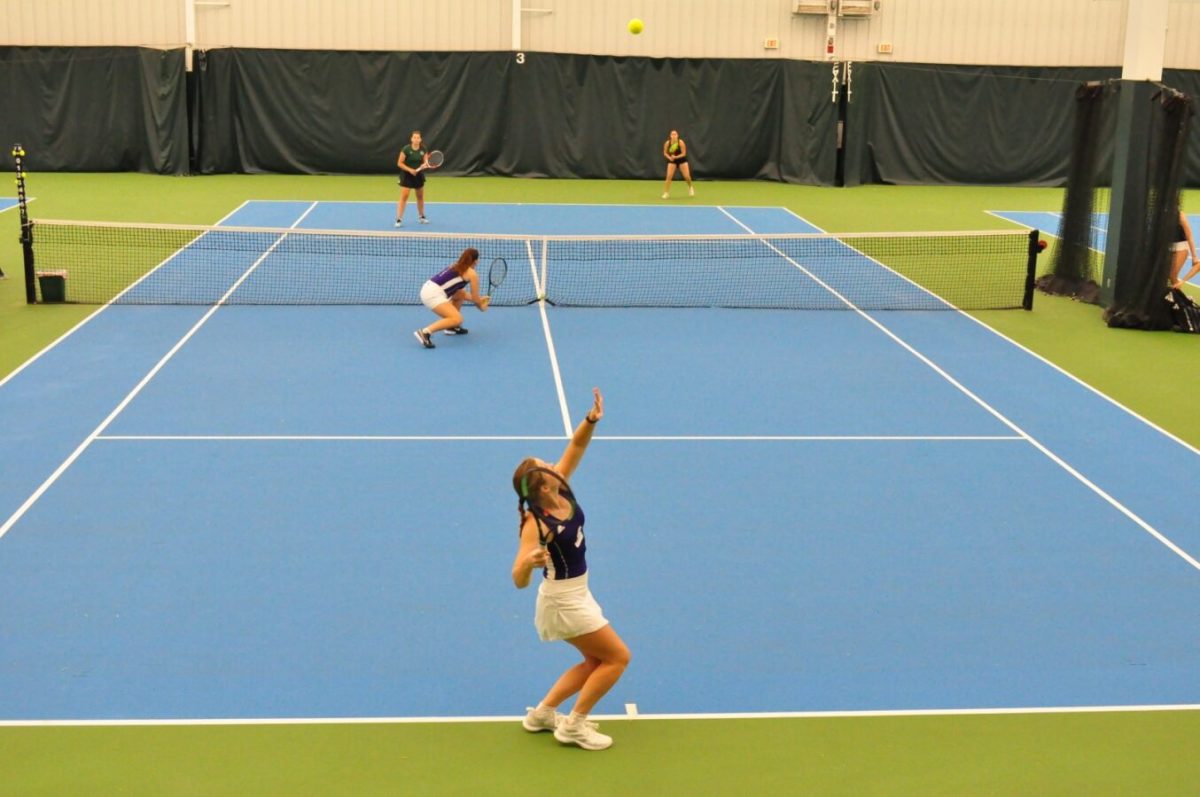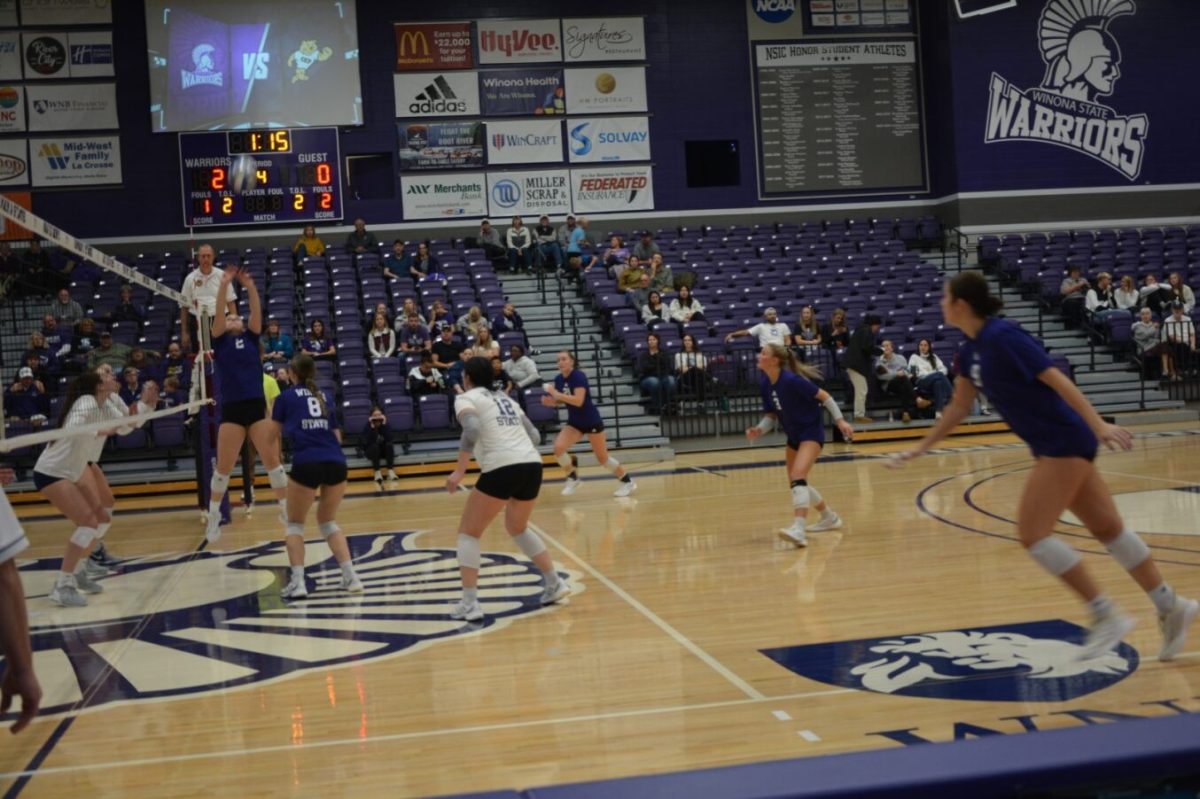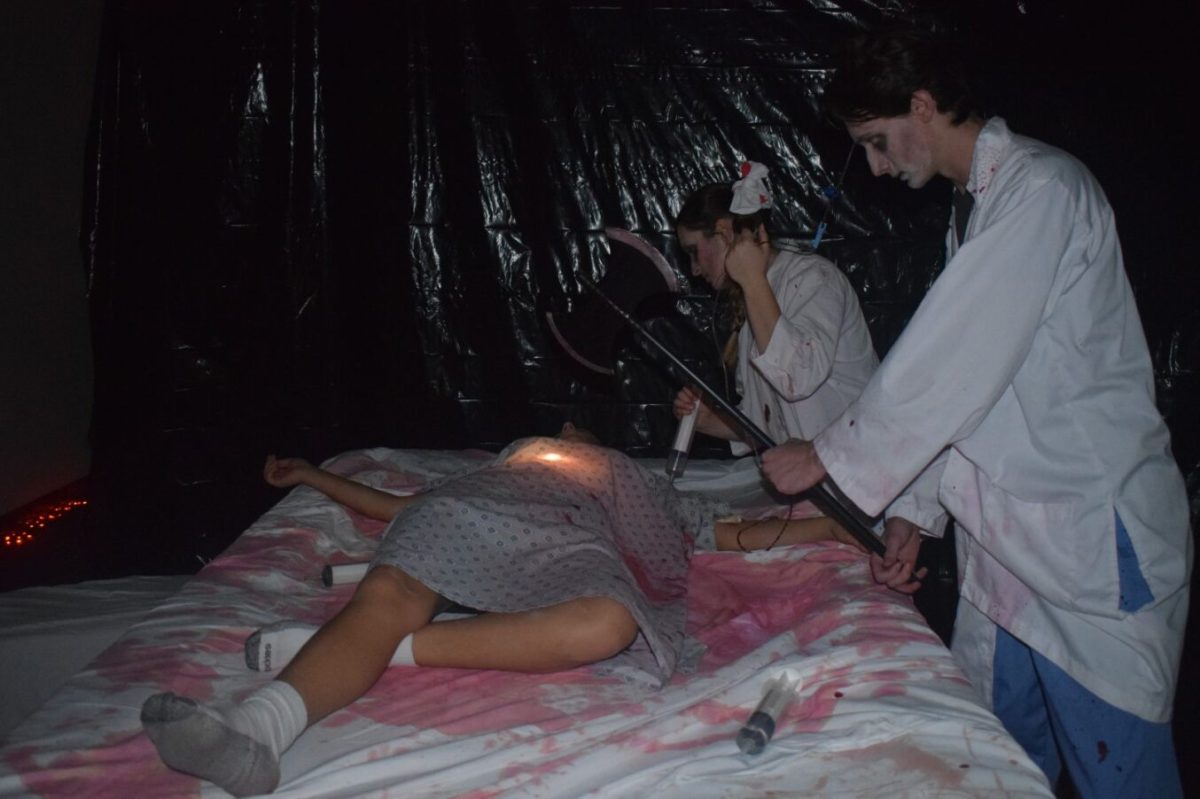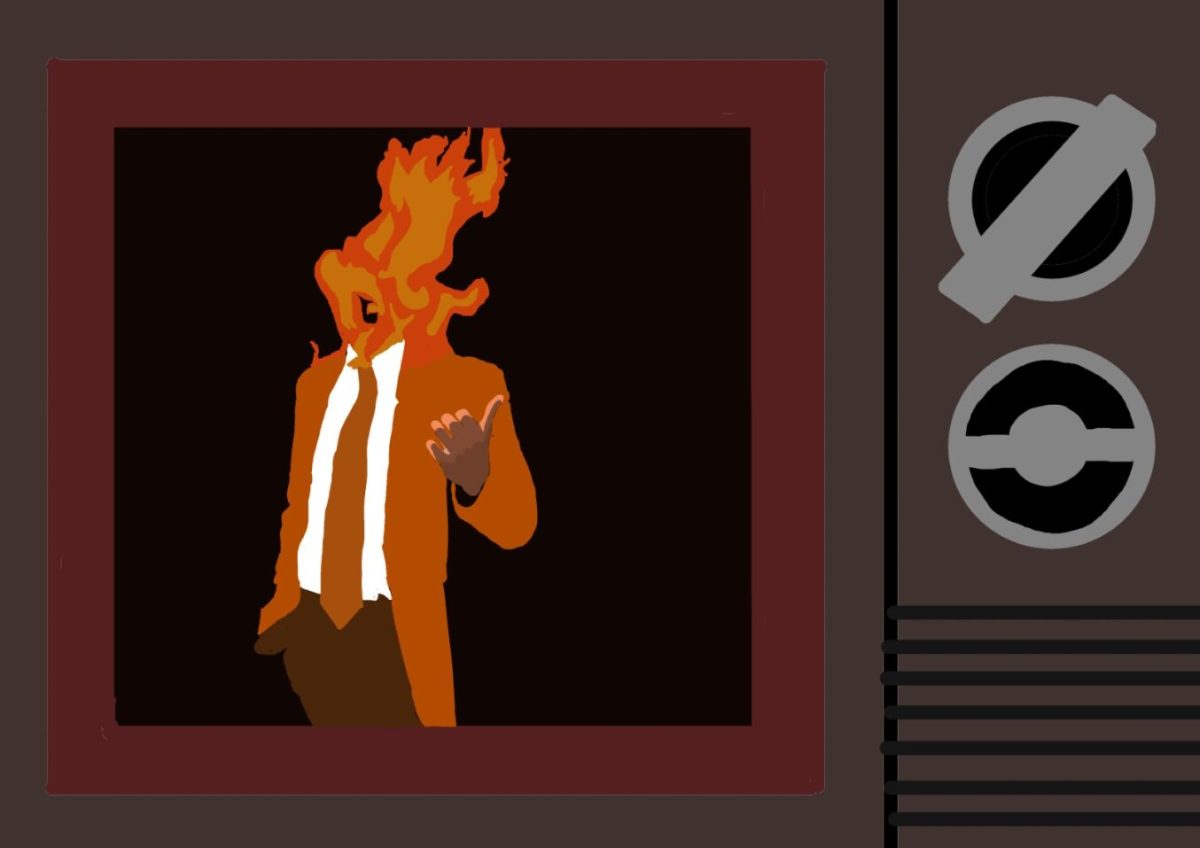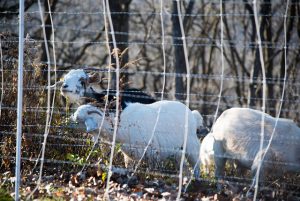
Morghan Lemmenes / Winonan
Garvin Heights has a new set of visitors unlike any before: goats. The animals belong to the company Diversity Land Works and are eating the invasive plants on Garvin Heights.
Neal Mundahl wrote a grant, supported by the All-University Arboretum and Land Stewardship Committee, to restore Garvin Heights. The goats are there to accompany the grant.
“We have contracted with Diversity Land Works to bring their goats up to the site periodically to eat the invasive plants that are there,” Mundahl said.
Right now, this is the first time the goats have been up there, but they will become regular visitors for the next two years.
The goat grazing company has put up electric fencing to keep the goats in the targeted area. Then the fencing will be moved to two other areas after this section is complete.
Mostly, they are focused on the goats eating the European Buckthorn. The buckthorn starts out as a shrub, but can grow into a large tree.
“It’s escaped cultivation and its been in the Winona area for a long time, but it was originally brought in for people to plant as a hedge. It produces berries that the birds eat and carry seeds along with. So, the seeds get everywhere as a result,” Mundahl said.
The plant invades a habitat and dominates the habitat and displaces everything else. It is a very aggressive species on how it competes with many other species of plants and it recreates the environment to it a more suitable living place for itself, instead of other plants.
The Conservation Corps of Minnesota and Iowa cut down a lot of the big buckthorn along with various other plants but over the summer, it grew into a bunch of little ones, which are easy to reach for the goats.
“The landscape arboretum at Winona State University decided to take the initiative to do something on a larger scale and that was one of the obvious choices because Winona State shares property up at Garvin Heights with the city of Winona,” Mundahl said. “So, by partnering with the city, we are able to work on around 40 acres.”
They are able to remove the invasive buckthorn and other species from important habitats, not the entire area.
“We are trying to remove the buckthorn from both the savannah habitat and the prairie habitat. Once when that is under control, then we can see what plants remain that we can see and what plants should be there but aren’t,” Mundahl said.
Mundahl also teaches a plant ecology class, and has had his students doing projects such as documenting tree density and how many buckthorns are in different locations. We are going to visit the area when the goats leave to see what damage they have done,” Mundahl said.
There is also a senior student whose senior capstone project is looking at the goats and the benefits of their grazing to other plants in the area.
When the goats eat all of the invasive plants, Mundahl and his class will either plant seeds or replant vegetation to get them back in that environment again. Then it will be a matter of trying to maintain that habitat once they have got it back to its normal condition again.
Generally, the goats will eat the plants, bark, leaves and, in order to actually kill the plant, it will take an extended period of time. The goats will visit again in the spring, summer and late fall.
“This year we just got them started so they are in their late fall mode. But they will be coming back to visit the same locations and keep eating the plants back to hopefully kill the plants that are there so they won’t return,” Mundahl said.
James Reynolds is co-chair of Winona State’s Arboretum Committee.
“Additionally, public workshops for landowners and others who are interested in land restoration will also be held once the restoration work nears completion,” Reynolds said.
There are three years’ worth of funding, so the goats will visit multiple times over the years.
“We are trying to restore the missing plants once we get the buckthorn under control,” Mundahl said.
-Morghan Lemmenes







